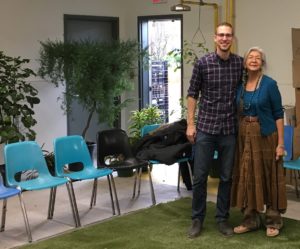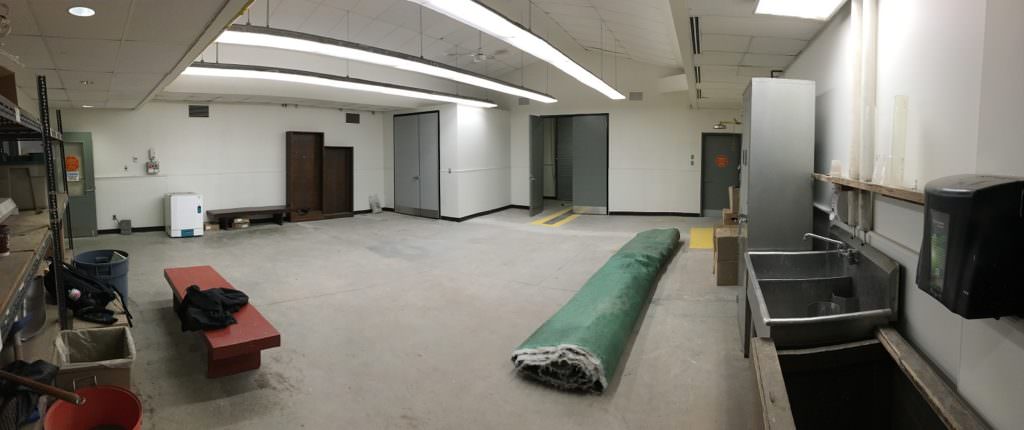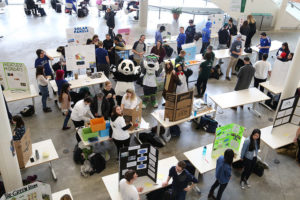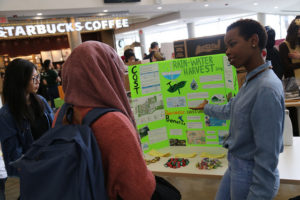 Social-cultural sharing and economic-environmental sustainability were the dominant themes that surfaced during a multi-disciplinary approach used in a collaborative event between students from the course Achieving Success in the 21st Century (GED2012 Cabinetmaking and Furniture Technician program) and the course Aboriginal Culture and Heritage (SSC1788, GAS Aboriginal Studies program).
Social-cultural sharing and economic-environmental sustainability were the dominant themes that surfaced during a multi-disciplinary approach used in a collaborative event between students from the course Achieving Success in the 21st Century (GED2012 Cabinetmaking and Furniture Technician program) and the course Aboriginal Culture and Heritage (SSC1788, GAS Aboriginal Studies program).
Professors, Jason Verboomen and Louise Lahache collaborated to design a learning experience for their students that would foster a collaborative sharing between Aboriginal Studies students and Cabinet Making students. Together Jason and Louise decided that the most appropriate forum for this event would be an Indigenous teaching method: the talking circle. Teaching in a circle is an effective method for teaching/learning with a democratized approach where teacher and learner become equals, which means that Professors need to be comfortable sharing power with their students. Key to comfort levels is being knowledgeable about your subject so that you can facilitate the circle by redirecting and linking different aspects of discussion into a holistic view that supports greater student involvement.
The collaborative sharing meant that Jason and Louise spent many hours discussing cultural, philosophical, and economic and environmental sustainability issues around the kinds of relationships both groups of students have with wood. Both Professors were actively engaged in researching and sharing their topic with one another in order to be well prepared for whatever direction students would bring to the teaching and learning within the talking circle.
The students gathered in M building of the Ottawa campus where space within the greenhouse was transformed into an immersive environment full of living, green plants and small trees, with the assistance of Horticultural Industries Program Co-Coordinator, Tommy Wingreen. This was the perfect space to hold a multidisciplinary talking circle about the relationships students have with wood in the Aboriginal Studies and Cabinet Making programs. It provided a comfortable space and environment for large group engagement in the circle.
With Jason and Louise providing feedback and further questions, the students were free to take the discussion to another level with a surprising and pleasant outcome for both Professors. The students had a successful sharing of approaches, philosophies and worldviews about their relationships to wood which created a social bond between Indigenous and non-Indigenous students that did not exist before. They found their commonalities, and moved on toward an exploration of environmentally sustainable methods and approaches to their relationships with wood. This is what happened when Indigenous ways of teaching and learning were given recognition and space within the college pedagogies.
A reflection activity assignment followed the talking circle session.

Empty room in M building cleared and ready for its transformation to a supporting and green learning environment

A room transformed and ready to support talking circle to explore culture and connection to wood


 Social-cultural sharing and economic-environmental sustainability were the dominant themes that surfaced during a multi-disciplinary approach used in a collaborative event between students from the course Achieving Success in the 21st Century (GED2012 Cabinetmaking and Furniture Technician program) and the course Aboriginal Culture and Heritage (SSC1788, GAS Aboriginal Studies program).
Social-cultural sharing and economic-environmental sustainability were the dominant themes that surfaced during a multi-disciplinary approach used in a collaborative event between students from the course Achieving Success in the 21st Century (GED2012 Cabinetmaking and Furniture Technician program) and the course Aboriginal Culture and Heritage (SSC1788, GAS Aboriginal Studies program).
